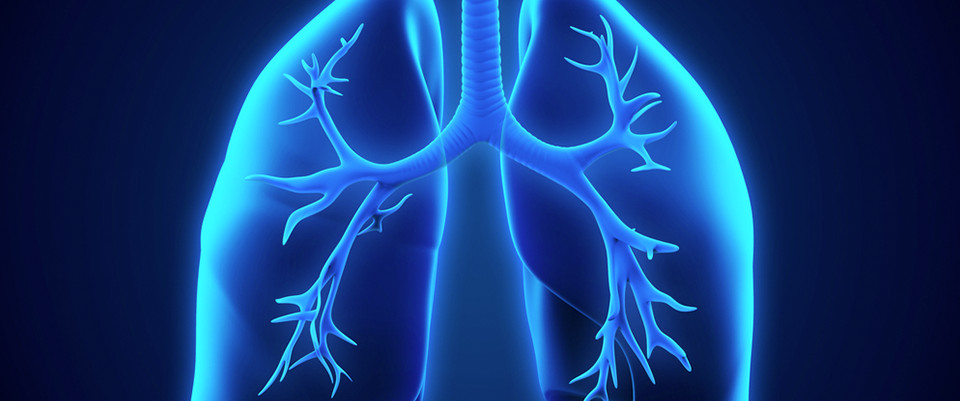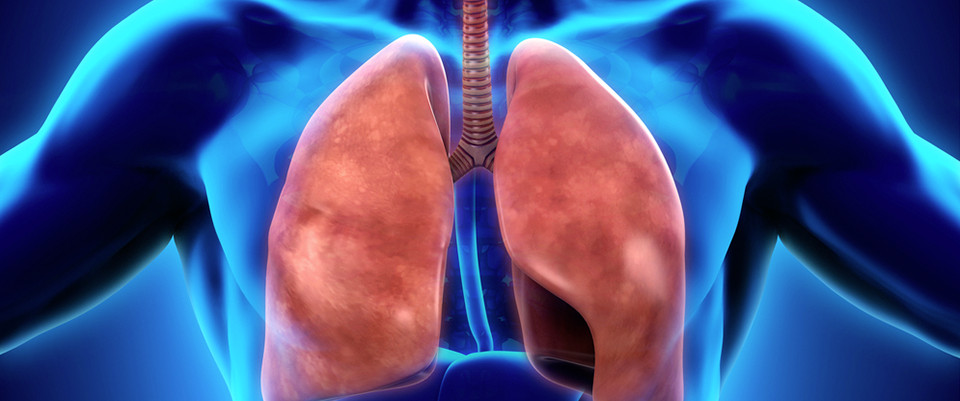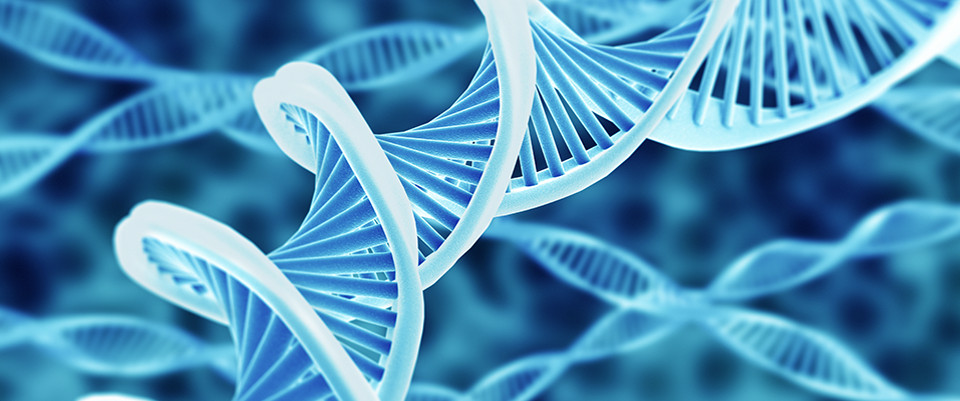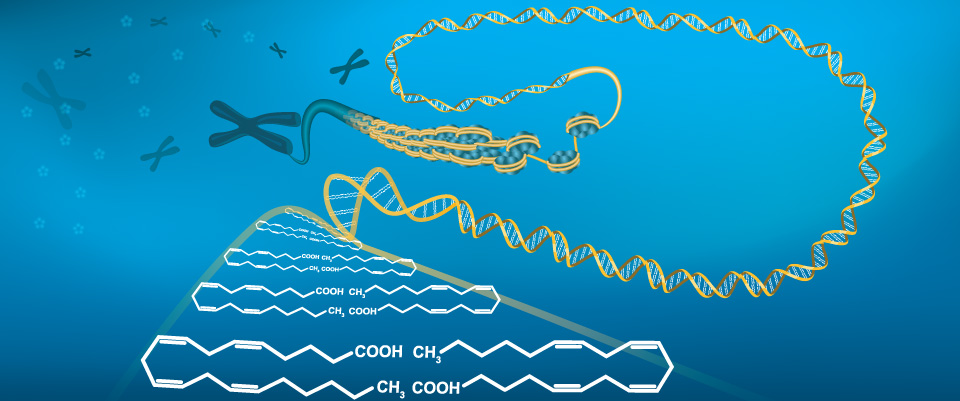PubMed
The neural stem cell fate determinant TRIM32 regulates complex behavioral traits.
The neural stem cell fate determinant TRIM32 regulates complex behavioral traits.
Front Cell Neurosci. 2015;9:75
Authors: Hillje AL, Beckmann E, Pavlou MA, Jaeger C, Pacheco MP, Sauter T, Schwamborn JC, Lewejohann L
Abstract
In mammals, new neurons are generated throughout the entire lifespan in two restricted areas of the brain, the dentate gyrus (DG) of the hippocampus and the subventricular zone (SVZ)-olfactory bulb (OB) system. In both regions newborn neurons display unique properties that clearly distinguish them from mature neurons. Enhanced excitability and increased synaptic plasticity enables them to add specific properties to information processing by modulating the existing local circuitry of already established mature neurons. Hippocampal neurogenesis has been suggested to play a role in spatial-navigation learning, spatial memory, and spatial pattern separation. Cumulative evidences implicate that adult-born OB neurons contribute to learning processes and odor memory. We recently demonstrated that the cell fate determinant TRIM32 is upregulated in differentiating neuroblasts of the SVZ-OB system in the adult mouse brain. The absence of TRIM32 leads to increased progenitor cell proliferation and less cell death. Both effects accumulate in an overproduction of adult-generated OB neurons. Here, we present novel data from behavioral studies showing that such an enhancement of OB neurogenesis not necessarily leads to increased olfactory performance but in contrast even results in impaired olfactory capabilities. In addition, we show at the cellular level that TRIM32 protein levels increase during differentiation of neural stem cells (NSCs). At the molecular level, several metabolic intermediates that are connected to glycolysis, glycine, or cysteine metabolism are deregulated in TRIM32 knockout mice brain tissue. These metabolomics pathways are directly or indirectly linked to anxiety or depression like behavior. In summary, our study provides comprehensive data on how the impairment of neurogenesis caused by the loss of the cell fate determinant TRIM32 causes a decrease of olfactory performance as well as a deregulation of metabolomic pathways that are linked to mood disorders.
PMID: 25852471 [PubMed]
Systemic Alterations in the Metabolome of Diabetic NOD Mice Delineate Increased Oxidative Stress Accompanied by Reduced Inflammation and Hypertriglyceridemia.
Systemic Alterations in the Metabolome of Diabetic NOD Mice Delineate Increased Oxidative Stress Accompanied by Reduced Inflammation and Hypertriglyceridemia.
Am J Physiol Endocrinol Metab. 2015 Apr 7;:ajpendo.00019.2015
Authors: Fahrmann J, Grapov D, Yang J, Hammock B, Fiehn O, Bell GI, Hara M
Abstract
Non-obese diabetic (NOD) mice are a commonly-used model of type 1 diabetes (T1D). However, not all animals will develop overt diabetes despite undergoing similar autoimmune insult. In this study, a comprehensive metabolomic approach, consisting of gas chromatography time-of-flight (GC-TOF) mass spectrometry (MS), ultra high performance liquid chromatography accurate mass quadruple time-of-flight (UHPLC-qTOF) MS and targeted UHPLC-tandem mass spectrometry -based methodologies, was used to capture metabolic alterations in the metabolome and lipidome of plasma from NOD mice progressing or not progressing to T1D. Using this multi-platform approach, we identified >1000 circulating lipids and metabolites in male and female progressor and non-progressor animals (n=71). Statistical and multivariate analyses were used to identify age- and sex-independent metabolic markers, which best differentiated metabolic profiles of progressors and non-progressors. Key T1D-associated perturbations were related with 1) increases in oxidation products glucono delta lactone and galactonic acid, and reductions in cysteine methionine and threonic acid, suggesting increased oxidative stress; 2) reductions in circulating polyunsaturated fatty acids and lipid signaling mediators, most notably arachidonic acid (AA) and AA-derived eicosanoids, implying impaired states of systemic inflammation; 3) elevations in circulating triacylglyercides reflective of hypertriglyceremia; and 4) reductions in major structural lipids, most notably lysophosphatidylcholines and phosphatidylcholines. Taken together, our results highlight the systemic perturbations that accompany a loss of glycemic control and development of overt T1D.
PMID: 25852003 [PubMed - as supplied by publisher]
Neurochemical Metabolomics Reveals Disruption to Sphingolipid Metabolism Following Chronic Haloperidol Administration.
Neurochemical Metabolomics Reveals Disruption to Sphingolipid Metabolism Following Chronic Haloperidol Administration.
J Neuroimmune Pharmacol. 2015 Apr 8;
Authors: McClay JL, Vunck SA, Batman AM, Crowley JJ, Vann RE, Beardsley PM, van den Oord EJ
Abstract
Haloperidol is an effective antipsychotic drug for treatment of schizophrenia, but prolonged use can lead to debilitating side effects. To better understand the effects of long-term administration, we measured global metabolic changes in mouse brain following 3 mg/kg/day haloperidol for 28 days. These conditions lead to movement-related side effects in mice akin to those observed in patients after prolonged use. Brain tissue was collected following microwave tissue fixation to arrest metabolism and extracted metabolites were assessed using both liquid and gas chromatography mass spectrometry (MS). Over 300 unique compounds were identified across MS platforms. Haloperidol was found to be present in all test samples and not in controls, indicating experimental validity. Twenty-one compounds differed significantly between test and control groups at the p < 0.05 level. Top compounds were robust to analytical method, also being identified via partial least squares discriminant analysis. Four compounds (sphinganine, N-acetylornithine, leucine and adenosine diphosphate) survived correction for multiple testing in a non-parametric analysis using false discovery rate threshold < 0.1. Pathway analysis of nominally significant compounds (p < 0.05) revealed significant findings for sphingolipid metabolism (p = 0.015) and protein biosynthesis (p = 0.024). Altered sphingolipid metabolism is suggestive of disruptions to myelin. This interpretation is supported by our observation of elevated N-acetyl-aspartyl-glutamate in the haloperidol-treated mice (p = 0.004), a marker previously associated with demyelination. This study further demonstrates the utility of murine neurochemical metabolomics as a method to advance understanding of CNS drug effects.
PMID: 25850894 [PubMed - as supplied by publisher]
Intestinal microbiota-derived metabolomic blood plasma markers for prior radiation injury.
Related Articles
Intestinal microbiota-derived metabolomic blood plasma markers for prior radiation injury.
Int J Radiat Oncol Biol Phys. 2015 Feb 1;91(2):360-7
Authors: Ó Broin P, Vaitheesvaran B, Saha S, Hartil K, Chen EI, Goldman D, Fleming WH, Kurland IJ, Guha C, Golden A
Abstract
PURPOSE: Assessing whole-body radiation injury and absorbed dose is essential for remediation efforts following accidental or deliberate exposure in medical, industrial, military, or terrorist incidents. We hypothesize that variations in specific metabolite concentrations extracted from blood plasma would correlate with whole-body radiation injury and dose.
METHODS AND MATERIALS: Groups of C57BL/6 mice (n=12 per group) were exposed to 0, 2, 4, 8, and 10.4 Gy of whole-body gamma radiation. At 24 hours after treatment, all animals were euthanized, and both plasma and liver biopsy samples were obtained, the latter being used to identify a distinct hepatic radiation injury response within plasma. A semiquantitative, untargeted metabolite/lipid profile was developed using gas chromatography-mass spectrometry and liquid chromatography-tandem mass spectrometry, which identified 354 biochemical compounds. A second set of C57BL/6 mice (n=6 per group) were used to assess a subset of identified plasma markers beyond 24 hours.
RESULTS: We identified a cohort of 37 biochemical compounds in plasma that yielded the optimal separation of the irradiated sample groups, with the most correlated metabolites associated with pyrimidine (positively correlated) and tryptophan (negatively correlated) metabolism. The latter were predominantly associated with indole compounds, and there was evidence that these were also correlated between liver and plasma. No evidence of saturation as a function of dose was observed, as has been noted for studies involving metabolite analysis of urine.
CONCLUSIONS: Plasma profiling of specific metabolites related to pyrimidine and tryptophan pathways can be used to differentiate whole-body radiation injury and dose response. As the tryptophan-associated indole compounds have their origin in the intestinal microbiome and subsequently the liver, these metabolites particularly represent an attractive marker for radiation injury within blood plasma.
PMID: 25636760 [PubMed - indexed for MEDLINE]
Deciphering molecular determinants of chemotherapy in gastrointestinal malignancy using systems biology approaches.
Related Articles
Deciphering molecular determinants of chemotherapy in gastrointestinal malignancy using systems biology approaches.
Drug Discov Today. 2014 Sep;19(9):1402-9
Authors: Lin LL, Huang HC, Juan HF, 2013 Taida Cancer Systems Biology Study Group
Abstract
Gastrointestinal cancers are asymptomatic in early tumor development, leading to high mortality rates. Peri- or postoperative chemotherapy is a common strategy used to prolong the life expectancy of patients with these diseases. Understanding the molecular mechanisms by which anticancer drugs exert their effect is crucial to the development of anticancer therapies, especially when drug resistance occurs and an alternative drug is needed. By integrating high-throughput techniques and computational modeling to explore biological systems at different levels, from gene expressions to networks, systems biology approaches have been successfully applied in various fields of cancer research. In this review, we highlight chemotherapy studies that reveal potential signatures using microarray analysis, next-generation sequencing (NGS), proteomic and metabolomic approaches for the treatment of gastrointestinal cancers.
PMID: 24793142 [PubMed - indexed for MEDLINE]
[GC-MS determination of metabolites in rat kidneys].
Related Articles
[GC-MS determination of metabolites in rat kidneys].
Zhong Nan Da Xue Xue Bao Yi Xue Ban. 2013 Jul;38(7):661-9
Authors: Liu S, Wang F, Mei W, Tao L
Abstract
OBJECTIVE: To establish a method to determine the metabolites in rat kidney tissues by gas chromatography-mass spectrometry (GC-MS) combined with chemometric techniques.
METHODS: Metabolites were separated and identified on HP-5MS column (30 m × 0.25 μm × 0.25 mm). The initial column temperature was 100 Celsius degree lasting 3 min, and then programmed at 8 Celsius degree/ min to 300 Celsius degree, maintaining at this temperature for 6 min. The internal standard was heptadecanoic acid. The grinded kidney tissue was exacted by methanol. The supernatant was dried by nitrogen. After the oximation and derivation, the supernatant was analyzed by GC-MS. The overlapped peaks were resolved into pure chromatogram and mass spectra with chemometric techniques. Qualitative analysis was performed by comparing the obtained pure mass spectra with those in NIST mass spectra database and certificated by the standards and the references. The internal method was used for semi-quantitation.
RESULTS: A total of 53 compounds were identified. The main constitutions in the kidney tissue were amino acids, saccharides, fatty acids and urea.
CONCLUSION: The combination of methods is rapid and accurate for the analysis of metabolites in the kidney tissue, which provides more information for further study of metabonomics in kidney tissues.
PMID: 23908085 [PubMed - indexed for MEDLINE]
Profiles of 21-Carbon Steroids in 21-hydroxylase Deficiency.
Profiles of 21-Carbon Steroids in 21-hydroxylase Deficiency.
J Clin Endocrinol Metab. 2015 Apr 7;:jc20151023
Authors: Turcu AF, Rege J, Chomic R, Liu J, Nishimoto HK, Else T, Moraitis AG, Palapattu GS, Rainey WE, Auchus RJ
Abstract
CONTEXT: Marked elevations of 17-hydroxyprogesterone (17OHP) are characteristic of classic 21-hydroxylase deficiency (21OHD). Testing of 17OHP provides the basis for 21OHD diagnosis, although it suffers from several pitfalls. False-positive or false-negative results and poor discrimination of nonclassic 21OHD from carriers limit the utility of serum 17OHP and necessitate dynamic testing following cosyntropin stimulation when values are indeterminate.
OBJECTIVE: To provide a detailed characterization of 21-carbon (C21) steroids in classic 21OHD, which might identify other candidate steroids that could be employed for the diagnosis of 21OHD.
SETTING AND PARTICIPANTS: Patients (11 women, 10 men) with classic 21OHD and 21 sex- and age-matched controls seen in a tertiary referral center.
METHODS: C21 steroids in the peripheral sera from all subjects, as well as in media from cultured testicular adrenal rest (TART) cells and normal adrenal (NA) cells were analyzed using liquid chromatography/tandem mass spectrometry (10 steroids). Additionally, the dynamics of C21 steroid metabolism in TART and NA cells were assessed with radiotracer studies.
RESULTS: Five C21 steroids were significantly higher in 21OHD patients: 17OHP (67-fold, p<0.01); 21-deoxycortisol (21dF, 35-fold, p<0.01); 16α-hydroxyprogesterone (16OHP, 28-fold, p<0.01); progesterone (2 fold, p<0.01) and 11β-hydroxyprogesterone (11OHP, not detected in controls, p<0.01). The same steroids were the highest in media from TART cells relative to the NA cells: 11OHP, 58-65 fold; 21dF, 41-30 fold; 17OHP, 9-fold; progesterone, 9-12 fold and 16OHP, 7 fold.
CONCLUSION: Measurement of 16OHP and 11OHP along with 17OHP and 21dF by LC-MS/MS might comprise a biomarker panel to accurately diagnose all forms of 21OHD.
PMID: 25850025 [PubMed - as supplied by publisher]
Dynamic Changes in Amino Acid Concentration Profiles in Patients with Sepsis.
Dynamic Changes in Amino Acid Concentration Profiles in Patients with Sepsis.
PLoS One. 2015;10(4):e0121933
Authors: Su L, Li H, Xie A, Liu D, Rao W, Lan L, Li X, Li F, Xiao K, Wang H, Yan P, Li X, Xie L
Abstract
OBJECTIVES: The goal of this work was to explore the dynamic concentration profiles of 42 amino acids and the significance of these profiles in relation to sepsis, with the aim of providing guidance for clinical therapies.
METHODS: Thirty-five critically ill patients with sepsis were included. These patients were further divided into sepsis (12 cases) and severe sepsis (23 cases) groups or survivor (20 cases) and non-survivor (15 cases) groups. Serum samples from the patients were collected on days 1, 3, 5, 7, 10, and 14 following intensive care unit (ICU) admission, and the serum concentrations of 42 amino acids were measured.
RESULTS: The metabolic spectrum of the amino acids changed dramatically in patients with sepsis. As the disease progressed further or with poor prognosis, the levels of the different amino acids gradually increased, decreased, or fluctuated over time. The concentrations of sulfur-containing amino acids (SAAs), especially taurine, decreased significantly as the severity of sepsis worsened or with poor prognosis of the patient. The serum concentrations of SAAs, especially taurine, exhibited weak negative correlations with the Sequential Organ Failure Assessment (SOFA) (r=-0.319) and Acute Physiology and Chronic Health Evaluation (APACHE) II (r=-0.325) scores. The areas under the receiver operating characteristic curves of cystine, taurine, and SAA levels and the SOFA and APACHE II scores, which denoted disease prognosis, were 0.623, 0.674, 0.678, 0.86, and 0.857, respectively.
CONCLUSIONS: Critically ill patients with disorders of amino acid metabolism, especially of SAAs such as cystine and taurine, may provide an indicator of the need for the nutritional support of sepsis in the clinic.
TRIAL REGISTRATION: ClinicalTrial.gov identifier NCT01818830.
PMID: 25849571 [PubMed - as supplied by publisher]
1H NMR-Based Metabolomics Investigation of Copper-Laden Rat: A Model of Wilson's Disease.
1H NMR-Based Metabolomics Investigation of Copper-Laden Rat: A Model of Wilson's Disease.
PLoS One. 2015;10(4):e0119654
Authors: Xu J, Jiang H, Li J, Cheng KK, Dong J, Chen Z
Abstract
BACKGROUND AND PURPOSE: Wilson's disease (WD), also known as hepatoleticular degeneration (HLD), is a rare autosomal recessive genetic disorder of copper metabolism, which causes copper to accumulate in body tissues. In this study, rats fed with copper-laden diet are used to render the clinical manifestations of WD, and their copper toxicity-induced organ lesions are studied. To investigate metabolic behaviors of 'decoppering' process, penicillamine (PA) was used for treating copper-laden rats as this chelating agent could eliminate excess copper through the urine. To date, there has been limited metabolomics study on WD, while metabolic impacts of copper accumulation and PA administration have yet to be established.
MATERIALS AND METHODS: A combination of 1HNMR spectroscopy and multivariate statistical analysis was applied to examine the metabolic profiles of the urine and blood serum samples collected from the copper-laden rat model of WD with PA treatment.
RESULTS: Copper accumulation in the copper-laden rats is associated with increased lactate, creatinine, valine and leucine, as well as decreased levels of glucose and taurine in the blood serum. There were also significant changes in p-hydroxyphenylacetate (p-HPA), creatinine, alpha-ketoglutarate (α-KG), dimethylamine, N-acetylglutamate (NAG), N-acetylglycoprotein (NAC) in the urine of these rats. Notably, the changes in p-HPA, glucose, lactate, taurine, valine, leucine, and NAG were found reversed following PA treatment. Nevertheless, there were no changes for dimethylamine, α-KG, and NAC as a result of the treatment. Compared with the controls, the concentrations of hippurate, formate, alanine, and lactate were changed when PA was applied and this is probably due to its side effect. A tool named SMPDB (Small Molecule Pathway Database) is introduced to identify the metabolic pathway influenced by the copper-laden diet.
CONCLUSION: The study has shown the potential application of NMR-based metabolomic analysis in providing further insights into the molecular mechanism underlying disorder due to WD.
PMID: 25849323 [PubMed - as supplied by publisher]
Comprehensive Profiling of Amino Acid Response Uncovers Unique Methionine-Deprived Response Dependent on Intact Creatine Biosynthesis.
Comprehensive Profiling of Amino Acid Response Uncovers Unique Methionine-Deprived Response Dependent on Intact Creatine Biosynthesis.
PLoS Genet. 2015 Apr;11(4):e1005158
Authors: Tang X, Keenan MM, Wu J, Lin CA, Dubois L, Thompson JW, Freedland SJ, Murphy SK, Chi JT
Abstract
Besides being building blocks for protein synthesis, amino acids serve a wide variety of cellular functions, including acting as metabolic intermediates for ATP generation and for redox homeostasis. Upon amino acid deprivation, free uncharged tRNAs trigger GCN2-ATF4 to mediate the well-characterized transcriptional amino acid response (AAR). However, it is not clear whether the deprivation of different individual amino acids triggers identical or distinct AARs. Here, we characterized the global transcriptional response upon deprivation of one amino acid at a time. With the exception of glycine, which was not required for the proliferation of MCF7 cells, we found that the deprivation of most amino acids triggered a shared transcriptional response that included the activation of ATF4, p53 and TXNIP. However, there was also significant heterogeneity among different individual AARs. The most dramatic transcriptional response was triggered by methionine deprivation, which activated an extensive and unique response in different cell types. We uncovered that the specific methionine-deprived transcriptional response required creatine biosynthesis. This dependency on creatine biosynthesis was caused by the consumption of S-Adenosyl-L-methionine (SAM) during creatine biosynthesis that helps to deplete SAM under methionine deprivation and reduces histone methylations. As such, the simultaneous deprivation of methionine and sources of creatine biosynthesis (either arginine or glycine) abolished the reduction of histone methylation and the methionine-specific transcriptional response. Arginine-derived ornithine was also required for the complete induction of the methionine-deprived specific gene response. Collectively, our data identify a previously unknown set of heterogeneous amino acid responses and reveal a distinct methionine-deprived transcriptional response that results from the crosstalk of arginine, glycine and methionine metabolism via arginine/glycine-dependent creatine biosynthesis.
PMID: 25849282 [PubMed - as supplied by publisher]
Use of Nuclear Magnetic Resonance-Based Metabolomics to Characterize the Biochemical Effects of Naphthalene on Various Organs of Tolerant Mice.
Use of Nuclear Magnetic Resonance-Based Metabolomics to Characterize the Biochemical Effects of Naphthalene on Various Organs of Tolerant Mice.
PLoS One. 2015;10(4):e0120429
Authors: Lin CY, Huang FP, Ling YS, Liang HJ, Lee SH, Hu MY, Tsao PN
Abstract
Naphthalene, the most common polycyclic aromatic hydrocarbon, causes airway epithelium injury in mice. Repeated exposure of mice to naphthalene induces airway epithelia that are resistant to further injury. Previous studies revealed that alterations in bioactivation enzymes and increased levels of gamma-glutamylcysteine synthase in the bronchioles protect tolerant mice from naphthalene and its reactive metabolites. In our current study, tolerance was induced in male ICR mice using a total of 7 daily intraperitoneal injections of naphthalene (200 mg/kg). Both naphthalene-tolerant and non-tolerant mice were challenged with a dose of 300 mg/kg naphthalene on day 8 to investigate metabolite differences. The lungs, liver, and kidneys were collected for histopathology 24 h after the challenge dose. Bronchial alveolar lavage fluid (BALF) and both hydrophilic and hydrophobic extracts from each organ were analyzed using nuclear magnetic resonance (NMR)-based metabolomics. The histological results showed no observable injuries to the airway epithelium of naphthalene-tolerant mice when compared with the control. In contrast, airway injuries were observed in mice given a single challenge dose (injury mice). The metabolomics analysis revealed that the energy metabolism in the lungs of tolerant and injury mice was significantly perturbed. However, antioxidant metabolites, such as glutathione and succinate, were significantly increased in the lungs of tolerant mice, suggesting a role for these compounds in the protection of organs from naphthalene-induced electrophilic metabolites and free radicals. Damage to the airway cellular membrane, as shown by histopathological results and increased acetone in the BALF and perturbation of hydrophobic lung extracts, including cholesterol, phosphorylcholine-containing lipids, and fatty acyl chains, were observed in injury mice. Consistent with our histopathological results, fewer metabolic effects were observed in the liver and kidney of mice after naphthalene treatments. In conclusion, NMR-based metabolomics reveals possible mechanisms of naphthalene tolerance and naphthalene-induced toxicity in the respiratory system of mice.
PMID: 25849086 [PubMed - as supplied by publisher]
Pleiotropic effect of chromosome 5A and the mvp mutation on the metabolite profile during cold acclimation and the vegetative/generative transition in wheat.
Pleiotropic effect of chromosome 5A and the mvp mutation on the metabolite profile during cold acclimation and the vegetative/generative transition in wheat.
BMC Plant Biol. 2015;15(1):57
Authors: Juhász Z, Boldizsár Á, Nagy T, Kocsy G, Marincs F, Galiba G, Bánfalvi Z
Abstract
BACKGROUND: Wheat is the leading source of vegetable protein in the human diet, and metabolites are crucial for both plant development and human nutrition. The recent advances in metabolomics provided an opportunity to perform an untargeted metabolite analysis in this important crop.
RESULTS: Wheat was characterised at the metabolite level during cold acclimation and transition from the vegetative to the generative phase. The relationship between these changes and chromosome 5A and the maintained vegetative phase (mvp) mutation was also investigated. Samples were taken from the shoots and crowns during four developmental stages: plants grown at 20/17°C, after cold treatment but still during the vegetative phase, at the double ridge and during spikelet formation. The levels of 47 compounds were identified by gas chromatography-mass spectrometry, of which 38 were annotated. The cold treatment, in general, increased the concentrations of osmolites but not in all lines and not equally in the shoots and crowns. The accumulation of proline was not associated with the vernalisation process or with frost tolerance. The mvp mutation and chromosome 5A substitutions altered the amounts of several metabolites compared to those of the Tm and CS, respectively, during each developmental stage. The Ch5A substitution resulted in more substantial changes at the metabolite level than did the Tsp5A substitution. While Ch5A mainly influenced the sugar concentrations, Tsp5A altered the level of tricarboxylic acid cycle intermediates during the vegetative/generative transition. A much higher trehalose, proline, glutamine, asparagine, and unidentified m/z 186 content was detected in crowns than in shoots that may contribute to the frost tolerance of crowns.
CONCLUSIONS: Substantial influences of chromosome 5A and the mvp mutation on metabolism during four different developmental stages were demonstrated. The distinct and overlapping accumulation patterns of metabolites suggest the complex genetic regulation of metabolism in the shoots and crowns.
PMID: 25848884 [PubMed - as supplied by publisher]
MetaMapR: Pathway Independent Metabolomic Network Analysis Incorporating Unknowns.
MetaMapR: Pathway Independent Metabolomic Network Analysis Incorporating Unknowns.
Bioinformatics. 2015 Apr 5;
Authors: Grapov D, Wanichthanarak K, Fiehn O
Abstract
Metabolic network mapping is a widely used approach for integration of metabolomic experimental results with biological domain knowledge. However current approaches can be limited by biochemical domain or pathway knowledge which results in sparse disconnected graphs for real world metabolomic experiments. MetaMapR integrates enzymatic transformations with metabolite structural similarity, mass spectral similarity and empirical associations to generate richly connected metabolic networks. This open source, web-based or desktop software, written in the R programming language, leverages KEGG and PubChem databases to derive associations between metabolites even in cases where biochemical domain or molecular annotations are unknown. Network calculation is enhanced through an interface to the Chemical Translation System, which allows metabolite identifier translation between >200 common biochemical databases. Analysis results are presented as interactive visualizations or can be exported as high-quality graphics and numerical tables which can be imported into common network analysis and visualization tools.
AVAILABILITY AND IMPLEMENTATION: Freely available at http://dgrapov.github.io/MetaMapR/. Requires R and a modern web browser.
CONTACT: Oliver Fiehn - ofiehn@ucdavis.edu Supplementary information: Installation instructions, tutorials and application examples are available at http://dgrapov.github.io/MetaMapR/.
PMID: 25847005 [PubMed - as supplied by publisher]
Effect of sublethal preculturing on the survival of probiotics and metabolite formation in set-yoghurt.
Effect of sublethal preculturing on the survival of probiotics and metabolite formation in set-yoghurt.
Food Microbiol. 2015 Aug;49:104-15
Authors: Settachaimongkon S, van Valenberg HJ, Winata V, Wang X, Nout MJ, van Hooijdonk TC, Zwietering MH, Smid EJ
Abstract
The objective of this study was to investigate the effect of preculturing of Lactobacillus rhamnosus GG and Bifidobacterium animalis subsp. lactis BB12 under sublethal stress conditions on their survival and metabolite formation in set-yoghurt. Prior to co-cultivation with yoghurt starters in milk, the two probiotic strains were precultured under sublethal stress conditions (combinations of elevated NaCl and low pH) in a batch fermentor. The activity of sublethally precultured probiotics was evaluated during fermentation and refrigerated storage by monitoring bacterial population dynamics, milk acidification and changes in volatile and non-volatile metabolite profiles of set-yoghurt. The results demonstrated adaptive stress responses of the two probiotic strains resulting in their viability improvement without adverse influence on milk acidification. A complementary metabolomic approach using SPME-GC/MS and (1)H-NMR resulted in the identification of 35 volatiles and 43 non-volatile polar metabolites, respectively. Principal component analysis revealed substantial impact of the activity of sublethally precultured probiotics on metabolite formation demonstrated by distinctive volatile and non-volatile metabolite profiles of set-yoghurt. Changes in relative abundance of various aroma compounds suggest that incorporation of stress-adapted probiotics considerably influences the organoleptic quality of product. This study provides new information on the application of stress-adapted probiotics in an actual food-carrier environment.
PMID: 25846920 [PubMed - in process]
Gut microbiome composition and metabolomic profiles of wild western lowland gorillas (Gorilla gorilla gorilla) reflect host ecology.
Gut microbiome composition and metabolomic profiles of wild western lowland gorillas (Gorilla gorilla gorilla) reflect host ecology.
Mol Ecol. 2015 Apr 6;
Authors: Gomez A, Petrzelkova K, Yeoman CJ, Vlckova K, Mrázek J, Koppova I, Carbonero F, Ulanov A, Modry D, Todd A, Torralba M, Nelson K, Gaskins HR, Wilson B, Stumpf RM, White BA, Leigh SR
Abstract
The metabolic activities of gut microbes significantly influence host physiology; thus, characterizing the forces that modulate this micro-ecosystem is key to understanding mammalian biology and fitness. To investigate the gut microbiome of wild primates and determine how this microbial communities respond to the host's external environment, we characterized fecal bacterial communities and, for the first time, gut metabolomes of four wild lowland gorilla groups in the Dzanga Sangha Protected Areas, Central African Republic. Results show that geographical range may be an important modulator of the gut microbiomes and metabolomes of these gorilla groups. Distinctions seemed to relate to feeding behavior; implying energy harvest thorough increased fruit consumption or fermentation of highly fibrous foods. These observations were supported by differential abundance of metabolites and bacterial taxa associated to the metabolism of cellulose, phenolics, organic acids, simple sugars, lipids and sterols between gorillas occupying different geographical ranges. Additionally, the gut microbiomes of a gorilla group under increased anthropogenic pressure could always be distinguished from that of all other groups. By characterizing the interplay between environment, behavior, diet and symbiotic gut microbes we present an alternative perspective on primate ecology and on the forces that shape the gut microbiomes of wild primates from an evolutionary context. This article is protected by copyright. All rights reserved.
PMID: 25846719 [PubMed - as supplied by publisher]
Targeted metabolic profiling of wounds in diabetic and non-diabetic mice.
Targeted metabolic profiling of wounds in diabetic and non-diabetic mice.
Wound Repair Regen. 2015 Apr 4;
Authors: Sood RF, Gu H, Djukovic D, Deng L, Ga M, Muffley LA, Raftery D, Hocking AM
Abstract
While cellular metabolism is known to regulate a number of key biological processes such as cell growth and proliferation, its role in wound healing is unknown. We hypothesized that cutaneous injury would induce significant metabolic changes and that the impaired wound healing seen in diabetes would be associated with a dysfunctional metabolic response to injury. We used a targeted metabolomics approach to characterize the metabolic profile of uninjured skin and full-thickness wounds at day 7 post-injury in non-diabetic (db/-) and diabetic (db/db) mice. By liquid chromatography mass spectrometry, we identified 129 metabolites among all tissue samples. Principal component analysis demonstrated that uninjured skin and wounds have distinct metabolic profiles and that diabetes alters the metabolic profile of both uninjured skin and wounds. Examining individual metabolites, we identified 62 with a significantly altered response to injury in the diabetic mice, with many of these, including glycine, kynurenate, and OH-phenylpyruvate, implicated in wound healing for the first time. Thus, we report the first comprehensive analysis of wound metabolic profiles, and our results highlight the potential for metabolomics to identify novel biomarkers and therapeutic targets for improved wound healing outcomes. This article is protected by copyright. All rights reserved.
PMID: 25845676 [PubMed - as supplied by publisher]
Plasma lipid analysis by hydrophilic interaction liquid chromatography coupled with electrospray ionization tandem mass spectrometry.
Plasma lipid analysis by hydrophilic interaction liquid chromatography coupled with electrospray ionization tandem mass spectrometry.
J Sep Sci. 2015 Apr 3;
Authors: Sonomura K, Kudoh S, Sato TA, Matsuda F
Abstract
A novel method for the analysis of endogenous lipids and related compounds was developed employing hydrophilic interaction liquid chromatography with electrospray ionization tandem mass spectrometry. A hydrophilic interaction liquid chromatography with carbamoyl stationary phase achieved clear separation of phosphatidylcholine, lysophosphatidylcholine, sphingomyelin, ceramide, and mono-hexsosyl ceramide groups with good peak area repeatability (RSD% < 10) and linearity (R(2) > 0.99). The established method was applied to human plasma assays and a total of 117 endogenous lipids were successfully detected and reproducibly identified. In addition, we investigated the simultaneous detection of small polar metabolites such as amino and organic acids co-existing in the same biological samples processed in a single analytical run with lipids. Our results show that hydrophilic interaction liquid chromatography is a useful tool for human plasma lipidome analysis and offers more comprehensive metabolome coverage. This article is protected by copyright. All rights reserved.
PMID: 25845351 [PubMed - as supplied by publisher]
Proteogenomics: emergence and promise.
Related Articles
Proteogenomics: emergence and promise.
Cell Mol Life Sci. 2015 Mar;72(5):953-7
Authors: Faulkner S, Dun MD, Hondermarck H
Abstract
Proteogenomics, or the integration of proteomics with genomics and transcriptomics, is emerging as the next step towards a unified understanding of cellular functions. Looking globally and simultaneously at gene structure, RNA expression, protein synthesis and post-translational modifications have become technically feasible and offer a new perspective to molecular processes. Recent publications have highlighted the value of proteogenomics in oncology for defining the molecular signature of human tumors, and translation to other areas of biomedicine and life sciences is anticipated. This mini-review will discuss recent developments, challenges and perspectives in proteogenomics.
PMID: 25609363 [PubMed - indexed for MEDLINE]
Quantification of endogenous metabolites by the postcolumn infused-internal standard method combined with matrix normalization factor in liquid chromatography-electrospray ionization tandem mass spectrometry.
Related Articles
Quantification of endogenous metabolites by the postcolumn infused-internal standard method combined with matrix normalization factor in liquid chromatography-electrospray ionization tandem mass spectrometry.
J Chromatogr A. 2015 Jan 2;1375:62-8
Authors: Liao HW, Chen GY, Wu MS, Liao WC, Tsai IL, Kuo CH
Abstract
Quantification of endogenous metabolites has enabled the discovery of biomarkers for diagnosis and provided for an understanding of disease etiology. The standard addition and stable isotope labeled-internal standard (SIL-IS) methods are currently the most widely used approaches to quantifying endogenous metabolites, but both have some limitations for clinical measurement. In this study, we developed a new approach for endogenous metabolite quantification by the postcolumn infused-internal standard (PCI-IS) method combined with the matrix normalization factor (MNF) method. MNF was used to correct the difference in MEs between standard solution and biofluids, and PCI-IS additionally tailored the correction of the MEs for individual samples. Androstenedione and testosterone were selected as test articles to verify this new approach to quantifying metabolites in plasma. The repeatability (n=4 runs) and intermediate precision (n=3 days) in terms of the peak area of androstenedione and testosterone at all tested concentrations were all less than 11% relative standard deviation (RSD). The accuracy test revealed that the recoveries were between 95.72% and 113.46%. The concentrations of androstenedione and testosterone in fifty plasma samples obtained from healthy volunteers were quantified by the PCI-IS combined with the MNF method, and the quantification results were compared with the results of the SIL-IS method. The Pearson correlation test showed that the correlation coefficient was 0.98 for both androstenedione and testosterone. We demonstrated that the PCI-IS combined with the MNF method is an effective and accurate method for quantifying endogenous metabolites.
PMID: 25516166 [PubMed - indexed for MEDLINE]
Mass spectral similarity for untargeted metabolomics data analysis of complex mixtures.
Mass spectral similarity for untargeted metabolomics data analysis of complex mixtures.
Int J Mass Spectrom. 2015 Feb 1;377:719-717
Authors: Garg N, Kapono C, Lim YW, Koyama N, Vermeij MJ, Conrad D, Rohwer F, Dorrestein PC
Abstract
While in nucleotide sequencing, the analysis of DNA from complex mixtures of organisms is common, this is not yet true for mass spectrometric data analysis of complex mixtures. The comparative analyses of mass spectrometry data of microbial communities at the molecular level is difficult to perform, especially in the context of a host. The challenge does not lie in generating the mass spectrometry data, rather much of the difficulty falls in the realm of how to derive relevant information from this data. The informatics based techniques to visualize and organize datasets are well established for metagenome sequencing; however, due to the scarcity of informatics strategies in mass spectrometry, it is currently difficult to cross correlate two very different mass spectrometry data sets from microbial communities and their hosts. We highlight that molecular networking can be used as an organizational tool of tandem mass spectrometry data, automated database search for rapid identification of metabolites, and as a workflow to manage and compare mass spectrometry data from complex mixtures of organisms. To demonstrate this platform, we show data analysis from hard corals and a human lung associated with cystic fibrosis.
PMID: 25844058 [PubMed - as supplied by publisher]











